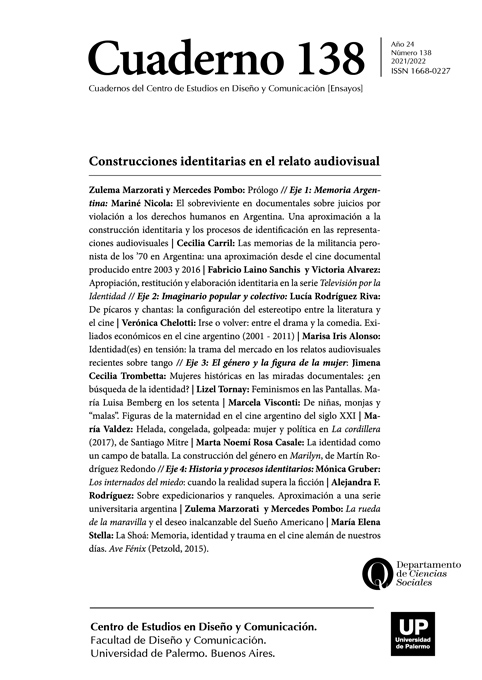Los internados del miedo: cuando la realidad supera la ficción
Abstract
In 2002, journalists Montse Armengou and Ricard Belis made Los niños perdidos del franquismo (Els nens perduts du franquisme), a documentary for TV3-Televisio de Catalunya, in Spain. The filmed material partially summarized what they would turn into a homonymous book. But after finishing their research, the accusations ketp coming. As Belis points out, the lack of evindentiary documents was not an issue, since they were a lot of denouncements that had to be deal with. This way, filmmakers focussed on an unknown episode in the Spanish past. Los internados del miedo could easily be the title of a horror film, but it isn’t, since truth is stranger than fiction. Los internados del miedo (Els internats de la por, 2015) by Montse Armengou and Ricard Belis, gathers the testimonies of humiliations, deprivation and even medical experiments of the victims of the Francoist Boarding Schools. Psychiatric Hospitals, Preventorioums, Orphanages and Boarding schools left a despicable mark in Spanish history, in which torture, rape, child labour and children trafficking played a significant role. We intend to tackle this documentary material in order to help restore the voice and identity of the silenced victims. Was poverty one of the causes of their situation? What happened to the single mothers’ children? And those whose parents were well known anti-Francoist? This and other questions will guide our search. We will try to establish the causes that put those minors in a situation of terrible vulnerability, turning them in a easy target for such practices. We must not fotget that in fragrant connivance the State, the Church and some companies, were responsible of a macabre and systematic programme.
References
Armengou, M., Belis, R. (2016). Los internados del miedo. España: Titivillus.
Barnow, E. (1998). El documental. Historia y estilo. Barcelona: Gedisa.
Feld, C., Stites Mor, J. (2009). (Comp.). El pasado que miramos. Memoria e imagen ante la historia reciente. Buenos Aires: Paidós.
Gruber, M. (2020). Cómo denunciar cuando todos callan: los niños robados por el franquismo. Marzorati, Z., Pombo, M. (Comp.). Violencia física y simbólica. Algunas reflexiones sobre el audiovisual y sus discursos. Cuadernos del Centro de Estudios en Diseño y Comunicación [Ensayos], 108, Bs. As.: UP, pp. 101-120.
Gruber, M. (2021/2022). Reflexiones sobre la construcción de la imagen femenina. La voz dormida: de Dulce Chacón a Benito Zambrano. Marzorati, Z., Pombo, M. (Comp.). Cultura audiovisual, memoria y género. Una perspectiva en crecimiento. Cuadernos del Centro de Estudios en Diseño y Comunicación [Ensayos], 95, Bs. As.: UP, pp. 81-96.
Jelin, E. (2002). Los trabajos de la memoria. Madrid: Siglo XXI.
Nichols, B. (1997). La representación de la realidad. Cuestiones y conceptos sobre el documental. Barcelona: Paidós.
Plantiga, C. (2009). Documental, traducción S. Pardo. En Revista Cine Documental, Nº 3, 2011. Recuperado el 20 de abril de 2021 de: http://revista.cinedocumental.com.ar/3/traducciones.html
Ranalletti, M. (2017) (Comp.). La escritura fílmica de la historia. Problemas, recursos, perspectivas. Buenos Aires: EDUNTREF.
Roig, N. (2018). No llores que vas a ser feliz. El tráfico de bebés en España: de la represión al negocio (1938-1996). Barcelona: Ático de los libros.
Rosenstone, R. (1997). El pasado en imágenes. El desafío del cine a nuestra idea de la historia. Barcelona: Ariel.
Los autores/as que publiquen en esta revista ceden los derechos de autor y de publicación a "Cuadernos del Centro de Estudios de Diseño y Comunicación", Aceptando el registro de su trabajo bajo una licencia de atribución de Creative Commons, que permite a terceros utilizar lo publicado siempre que de el crédito pertinente a los autores y a esta revista.


